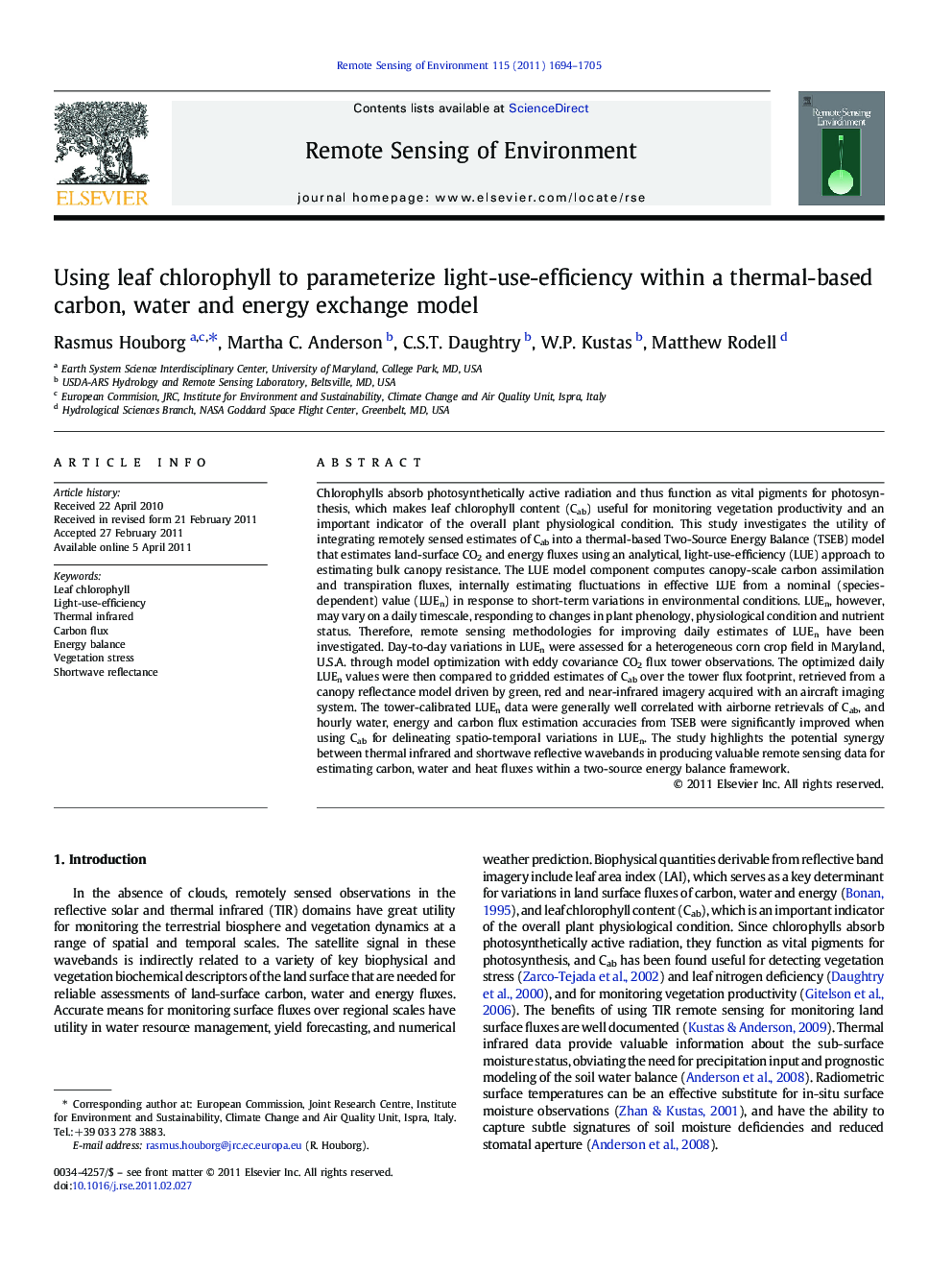| کد مقاله | کد نشریه | سال انتشار | مقاله انگلیسی | نسخه تمام متن |
|---|---|---|---|---|
| 4459360 | 1621290 | 2011 | 12 صفحه PDF | دانلود رایگان |

Chlorophylls absorb photosynthetically active radiation and thus function as vital pigments for photosynthesis, which makes leaf chlorophyll content (Cab) useful for monitoring vegetation productivity and an important indicator of the overall plant physiological condition. This study investigates the utility of integrating remotely sensed estimates of Cab into a thermal-based Two-Source Energy Balance (TSEB) model that estimates land-surface CO2 and energy fluxes using an analytical, light-use-efficiency (LUE) approach to estimating bulk canopy resistance. The LUE model component computes canopy-scale carbon assimilation and transpiration fluxes, internally estimating fluctuations in effective LUE from a nominal (species-dependent) value (LUEn) in response to short-term variations in environmental conditions. LUEn, however, may vary on a daily timescale, responding to changes in plant phenology, physiological condition and nutrient status. Therefore, remote sensing methodologies for improving daily estimates of LUEn have been investigated. Day-to-day variations in LUEn were assessed for a heterogeneous corn crop field in Maryland, U.S.A. through model optimization with eddy covariance CO2 flux tower observations. The optimized daily LUEn values were then compared to gridded estimates of Cab over the tower flux footprint, retrieved from a canopy reflectance model driven by green, red and near-infrared imagery acquired with an aircraft imaging system. The tower-calibrated LUEn data were generally well correlated with airborne retrievals of Cab, and hourly water, energy and carbon flux estimation accuracies from TSEB were significantly improved when using Cab for delineating spatio-temporal variations in LUEn. The study highlights the potential synergy between thermal infrared and shortwave reflective wavebands in producing valuable remote sensing data for estimating carbon, water and heat fluxes within a two-source energy balance framework.
Research highlights
► Highlights Cab as an important proxy for photosynthetic efficiency.
► Independent estimates of Cab and LUEn were significantly correlated.
► Reliable maps of Cab retrieved using remote sensing techniques.
► LUEn is a key input to a thermal-based two-source energy exchange model.
► Highlights synergy between thermal infrared and shortwave reflective data.
Journal: Remote Sensing of Environment - Volume 115, Issue 7, 15 July 2011, Pages 1694–1705